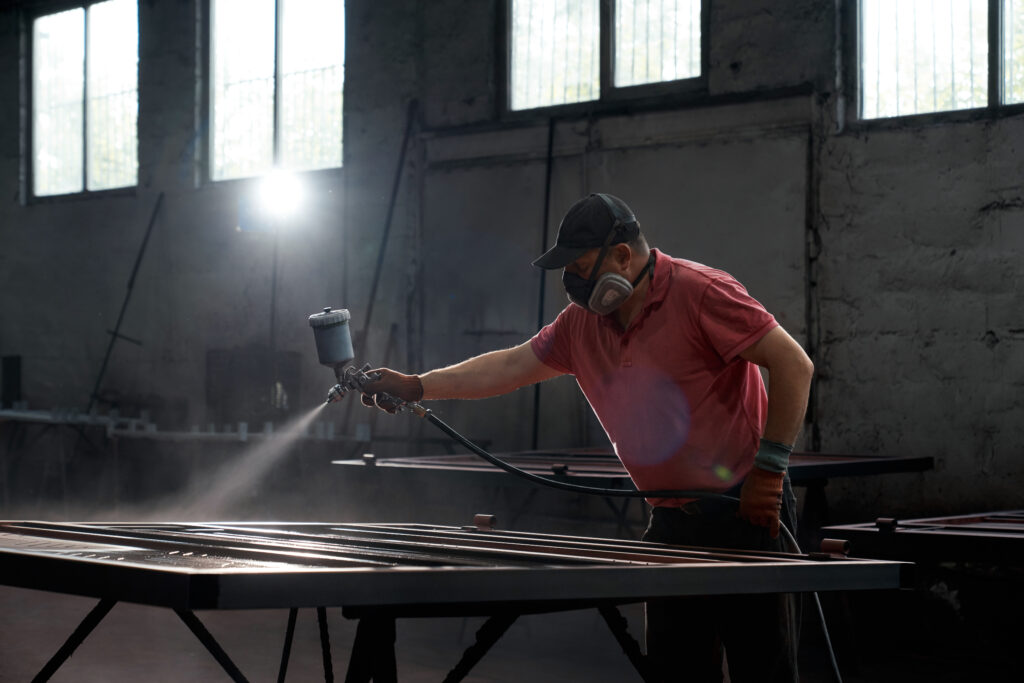Estimate Enamel Paint Quantity required for structural steelwork can be challenging, especially for medium-weight structures such as trusses, beams, and columns. Calculating the exact surface area of each steel component can be time-consuming. However, an efficient and reliable approximation method based on the weight of steel can simplify this process. This guide provides a straightforward technique to Estimate Enamel Paint Quantity accurately for a structure weighing 1 metric tonne.
Table of Contents

For an approximate method to determine the Estimate Enamel Paint Quantity needed for structural steel work, especially for a structure weighing 1 metric tonnes, you can use a standard rule of thumb based on the weight of the steel:
Approximate Method Based on Steel Weight:
Enamel Paint Quantity Calculator
Understanding the Basics of Estimate Enamel Paint Quantity
Before diving into calculations, it’s crucial to understand the relationship between the weight of the steel structure and its surface area. Generally, for structural steel components, there’s a well-established rule of thumb to estimate surface area based on weight.
Standard Assumptions:
- Surface Area per Metric Tonne: 1 metric tonne of structural steel typically has a surface area ranging between 15 to 20 square meters.
- Paint Coverage Rate: Enamel paint covers approximately 8 to 10 square meters per liter per coat, depending on paint quality and application method.
- Number of Coats: For protective durability, applying two coats is standard practice.
Step-by-Step Calculation for 1 Metric Tonne Steel Structure
1. Estimate the Surface Area of Steel
Using the standard assumption:
- For 1 metric tonne of structural steel, the surface area is estimated between 15 and 20 square meters.
2. Calculate Total Paint Quantity for One Coat
To estimate the paint quantity required for a single coat, use the formula:
Assuming the coverage rate is 8 to 10 square meters per liter:
Results for One Coat:
| Surface Area (sq. meters) | Coverage Rate (sq. meters/liter) | Paint Quantity (liters) |
|---|---|---|
| 15 sq. meters | 8 sq. meters/liter | 1.88 liters |
| 20 sq. meters | 10 sq. meters/liter | 2.0 liters |
3. Calculate Paint Quantity for Two Coats
Since two coats are typically recommended, double the amount calculated for one coat:
Results for Two Coats:
| Surface Area (sq. meters) | Coverage Rate (sq. meters/liter) | Paint Quantity for Two Coats (liters) |
| 15 sq. meters | 8 sq. meters/liter | 3.75 liters |
| 20 sq. meters | 10 sq. meters/liter | 4.0 liters |
Summary of Estimate Enamel Paint Quantity
For a 1 metric tonne steel structure, you will need approximately 3.75 to 4 liters of enamel paint for two coats, depending on the surface area and the paint coverage rate.
Factors Affecting Estimate Enamel Paint Quantity
Several factors can influence the actual quantity of enamel paint required:
1. Surface Texture
- Rough or corroded steel surfaces require more paint due to increased surface area.
2. Application Method
- Brush Application: Typically uses more paint compared to spraying or rolling.
- Spray Application: More efficient but can result in wastage due to overspray.
3. Paint Type and Quality
- Higher quality paints often provide better coverage, reducing the amount required.
4. Environmental Conditions
- High humidity or temperature variations can affect paint application and drying time.
Practical Tips for Efficient Paint Application
- Surface Preparation: Ensure the steel surface is clean, dry, and free from rust before painting.
- Primer Coating: Apply a primer before enamel paint for better adhesion and durability.
- Uniform Coating: Maintain a consistent paint thickness to avoid uneven coverage.
Conclusion
Estimate Enamel Paint Quantity for structural steel using this weight-based approximation method saves time and effort compared to detailed surface area calculations. By following this guide, you can efficiently determine the paint quantity for a 1 metric tonne steel structure, ensuring accurate budgeting and minimal wastage.